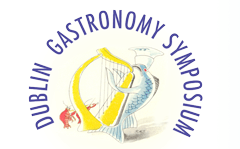Style Sheet for Dublin Gastronomy Symposium
Please use Times New Roman 12 pt font with 1.5 line spacing. We propose to use the Harvard referencing system, otherwise known as author-date. Footnotes are not favoured. The references are provided in a Works Cited section at the end of the article. For citations within the text, please use the following system: (Fanning, 2009, p.65). This could refer to a book by Bryan Fanning, which should be referenced in the following manner at the end of the article:
Fanning, B. (2009) A Study of the New Irish. London: Macmillan.
Have a look at the following paragraph, where I have bolded certain references:
One factor that has contributed to rising levels of obesity in the western world is a gradual change in eating habits. In pre-War Britain, poverty levels were higher, food was scarce, and habits such as snacking would not have been commonplace (Buckroyd, 1996, pp.421-2). Critser argues that in the US the rise in obesity grew from a “boundary-free culture of American food consumption” (2003, p.31), where growth in consumerism and personal wealth coincided with changing family eating habits. “Society as a whole has not adapted well to the constant availability and abundance of food” (Jeffrey and French, 1998, p.279).
Sample Reference List
- Beardsworth, I. and Keil, T. (1997) Sociology on the Menu: an Invitation to the Study of Food and Society. London: Routledge.
- Bowman, S.A., Gortmaker, S.L., Ebbeling, C.B., Pereira, M.A. and Ludwig, D.S. (2004) 'Effects of fast-food consumption on energy intake and diet quality among children in a national household survey', Pediatrics, 113(1), pp. 112-118.
- Buckroyd, J. (1996) Eating Your Heart Out: Understanding and Overcoming Eating Disorders. 2nd ed., London: Vermilion.
- Caroli, M. (2004a) 'Childhood obesity and the role of television', Journal of Obesity, 28(5), pp. 43-44.
- Caroli, M. (2004b) 'Role of television in adult obesity levels', International Journal of Obesity and Related Metabolic Disorders, 23(12), pp. 1303-1306.
- Cooper, C. (1998) Fat and Proud: the Politics of Size. London: The Women's Press.
- Critser, G. (2003) Fat Land. London: Allan Lane.
- Donnellan, E. (2005) 'Obesity task force warns of 'epidemic'', The Irish Times, 17 May, p. 1.
- Health Promotion Unit (2003) Obesity [online], available: http://www.healthpromotion.ie/topics/obesity/ [accessed 16 May 2005].
- Jeffery, R.W. and French, S.A. (1998) 'Epidemic obesity in the United States: are fast foods and television viewing contributing?', American Journal of Public Health , 88(2), pp. 277-281.
- Macdonald, G. (1997) 'Innovation diffusion and health education in schools', in Sidell, M., Jones, L., Katz, J. and Peberdy, A. (eds.) Debates and Dilemmas in Promoting Health. London: Open University, pp. 55-83.
- Supersize Me: a Film of Epic Proportions (2004). [Film]. Directed by Morgan Spurlock. USA: Roadside Attractions.
